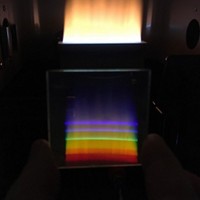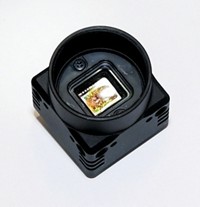Advertisement
Grab your lab coat. Let's get started
Welcome!
Welcome!
Create an account below to get 6 C&EN articles per month, receive newsletters and more - all free.
It seems this is your first time logging in online. Please enter the following information to continue.
As an ACS member you automatically get access to this site. All we need is few more details to create your reading experience.
Not you? Sign in with a different account.
Not you? Sign in with a different account.
ERROR 1
ERROR 1
ERROR 2
ERROR 2
ERROR 2
ERROR 2
ERROR 2
Password and Confirm password must match.
If you have an ACS member number, please enter it here so we can link this account to your membership. (optional)
ERROR 2
ACS values your privacy. By submitting your information, you are gaining access to C&EN and subscribing to our weekly newsletter. We use the information you provide to make your reading experience better, and we will never sell your data to third party members.
Lab Safety
Some safety eyewear fails to protect against ultrafast lasers
Users should test eyewear under their own working conditions, researchers suggest
by Jyllian Kemsley
March 26, 2018
| A version of this story appeared in
Volume 96, Issue 13

When used with ultrafast pulsed lasers, safety eyewear may fail to protect against eye damage, reported Hood College chemistry professor Christopher J. Stromberg at the meeting. Laser safety eyewear is typically tested and rated using low-power, continuous-wave conditions, assuming narrow-bandwidth lasers. Ultrafast laser pulses, however, have higher peak powers and wider bandwidths. Stromberg, undergraduate students Max Riedel-Topper and Sarah Wirick, and colleagues at NIST tested 22 eyewear filter samples from five manufacturers using an 800-nm Ti:sapphire laser system with 26-to-40-nm bandwidths and 40-to-80-femtosecond pulses (J. Laser Appl. 2017, DOI: 10.2351/1.5004090). Only 10 of the eyewear samples, all of them glass, performed as expected. All the plastic eyewear samples failed. These filters failed because of dye saturation, dye damage or bleaching, plastic substrate burning or melting, or a combination of these mechanisms. Stromberg and colleagues suspect that laser pulses’ higher bandwidths, along with their higher power punch, contributed to the filter damage. “Test eyewear filters under your own working conditions,” Stromberg advised others working with pulsed lasers. “It’s not a hard experiment to set up.”





Join the conversation
Contact the reporter
Submit a Letter to the Editor for publication
Engage with us on Twitter